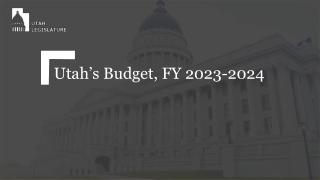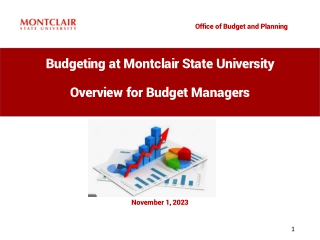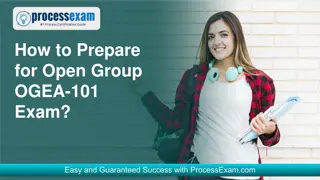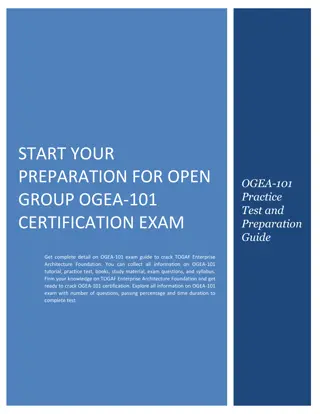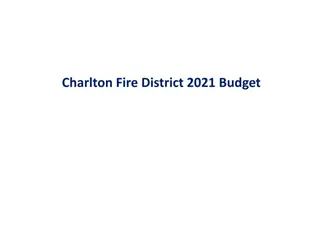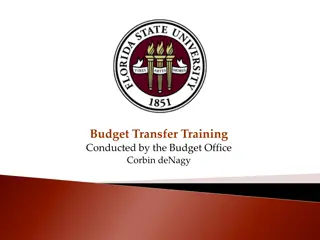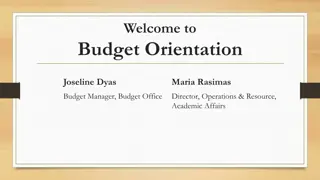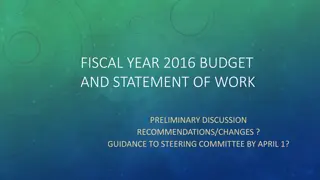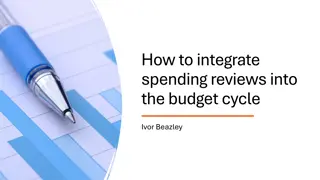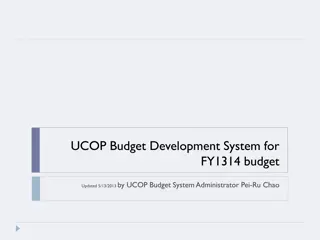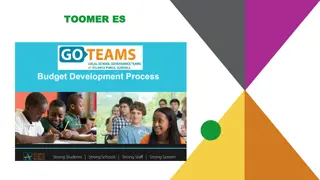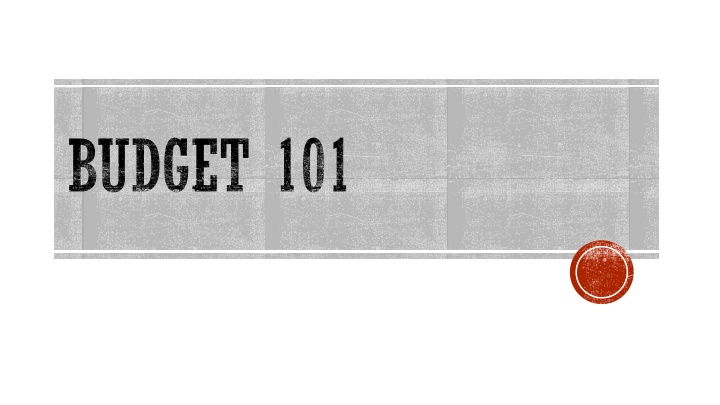
School Budgeting and Program Allotments in Texas
Explore the intricacies of school budgeting, CTE allotments, and high school program funding in Texas. Learn about funding sources, eligibility criteria, allowable uses of funds, and more to enhance educational opportunities for students.
Download Presentation

Please find below an Image/Link to download the presentation.
The content on the website is provided AS IS for your information and personal use only. It may not be sold, licensed, or shared on other websites without obtaining consent from the author. If you encounter any issues during the download, it is possible that the publisher has removed the file from their server.
You are allowed to download the files provided on this website for personal or commercial use, subject to the condition that they are used lawfully. All files are the property of their respective owners.
The content on the website is provided AS IS for your information and personal use only. It may not be sold, licensed, or shared on other websites without obtaining consent from the author.
E N D
Presentation Transcript
AGENDA FUNDS SCHOOL BUDGETS BUDGET CODES BUDGET PROCESS
CAREER AND TECHNOLOGY EDUCATION ALLOTMENT School districts are eligible to receive weighted* funding for eligible full-time equivalent (FTE) students in approved Career and Technology Education (CTE) programs. In addition to this weighted funding,school districts are also eligible to receive $50 for each FTE student enrolled in two or more advanced CTE courses for three or more credits.These two funding elements determine a district's total CTE allotment. The allotment applies to: students in grades 9 12 enrolled in CTE programs,and students with disabilities in grades 7 12 enrolled in Career and Technology for the Disabled (CTED) programs. For more information, see Texas Education Code: 42.154,Career and Technology Education Allotment. * Districts receive 35% more funding for CTE students than for regular students.
HIGH SCHOOL ALLOTMENT PROGRAM Purpose: The High School Allotment (HSA) was created by the Texas Legislature in 2006 to: prepare underachieving students to enter institutions of higher education encourage students to pursue advanced academic opportunities provide opportunities for students to take academically rigorous courses align secondary and postsecondary curriculum and expectations support other promising high school completion and success initiatives in Grades 6- 12 approved by the commissioner of education
HIGH SCHOOL ALLOTMENT PROGRAM Allowable Uses of HSA Funds Districts may use funds for campus-level or district-wide initiatives for students in grades 6-12. Allowable uses include: professional development for teachers providing instruction in advanced academic courses such as Advanced Placement (AP) hiring of additional teachers to allow for smaller class sizes in critical content areas fees for students taking dual credit classes and ACT/SAT tests academic support, such as AVID and AP strategies, to support at-risk students in challenging courses credit recovery programs activities supporting college readiness and awareness, including transportation for college visits
HIGH SCHOOL ALLOTMENT PROGRAM Eligibility: Funding amounts are based on the amount of $275 for each student in average daily attendance in grades 9 through 12. Estimated allotment payment reports are available through the School District State Aid Reports.
STATE COMPENSATORY EDUCATION The purpose of the State Compensatory Education (SCE) program is to supplement the regular or basic education program with compensatory, intensive, and/or accelerated instruction. The program requires Texas public school districts and charter schools to offer additional accelerated instruction to each student who meets one or more statutory or locally-defined eligibility criteria in order to reduce any disparity in performance on assessment instruments administered under Subchapter B, Chapter 39 TEC, or disparity in the rates of high school completion between students at risk of dropping out of school and all other LEA students.
TITLE I, PART A IMPROVING BASIC PROGRAMS Title I, Part A Improving Basic Programs Operated By Local Educational Agencies of the Elementary and Secondary Education Act (ESEA), as amended by the Every Student Succeeds Act (ESSA) of 2015, provides supplemental funding to state and local educational agencies to acquire additional education resources at schools serving high concentrations of students from low-income homes. These resources are used to improve the quality of education programs and ensure students from low- income families have opportunities to meet challenging state assessments. Title I, Part A schools implement either a Schoolwide program or a Targeted Assistance program. Both Title I, Part A models Schoolwide and Targeted Assistance use evidence-based methods and instructional strategies.
PLANNING PROCESS Average position cost Preliminary budget Enrollment Projections Funds Available Budget Allocations Snapshot Final Budget Conference
BUDGETS ONLINE Budgets Online is the budget data collection tool used to capture budget adjustments for Preliminary Budget and Final Budget Please note the adjustments do not directly feed into SAP
Membership Estimation Shows next years projections by grade level. The prior years show actual membership.
Date Action 10/15/2018-10/19/2018 Develop Budget Conference schedule 11/1/2018 Federal and State pulls Membership and Special Population Data (as PEIMS Snapshot 10/26/2018) 11/12/2018-12/03/2018 Budget Conferences 12/4/2018-12/05/2018 SSO's Approve School Budgets 12/06/2018 Pull position and non-salary data from Budgets Online 12/10-12/11/2018 Tag positions for mass processing 12/12/2018 Mass process position and non-salary transactions 12/14/2018-12/18/2018 Reconciliation SAMPLE HISD TIMELIME
RESOURCE ALLOCATION FORMULA Resource Allocation Formula Explanation of how your school funds were calculated
FUND BALANCE Fund Balance Breaks down all fund s total allocation and its adjusted allocation.
Budgets Online: Budget Balance Concept Total Allocation Minus Minus Non-Salary Expenditures Payroll Expenditures Equals Zero
CONSIDERSATIONS School Improvement Plan Priorities Program costs Past expenses To budget for future To plan to save money Eliminate waste Funding regulations Special revenues
SAMPLE STAFFING COST POSITION TITLE Principal, High School Tchr, English Administrative Asst, HS Tchr, Physics Tchr, Science Tchr, Journalism General Clerk III 11M Tchr, Reading Intervention Nurse Student Information Rep-12M Student Case Worker-10M CATE, Engineering Tchr, Physics Tchr, Science Teacher Specialist OR COUNSELOR Coord, College Access 10M HS Graduation Coach, 11M -Ttl1 1018: Fund FTE AVERAGE.POS.COSTBUDGET COSTJOB CODE 1991010001 1 127000 1991010001 1 56700 1991010001 1 44800 1991010001 0.5 56700 1991010001 0.5 56700 1991010001 0.49 56700 1991010001 1 26700 1991010003 1 56700 1991010003 0.5 56700 1991010004 1 34400 1991010004 1 32200 1991010005 1 56700 1991010005 0.5 56700 1991010005 0.5 56700 1991020001 1 56700 1991020001 1 56700 2110000000 1 75000 127000 56700 44800 28350 28350 27783 26700 56700 28350 34400 32200 56700 28350 28350 56700 56700 75000 30001343 30000012 30002717 30000017 30000027 30001326 30002633 30000160 30000066 30002685 30002524 30000863 30000017 30000027 30000787 30000787 30002536
SAMPLE BUDGET PLAN 19-20 AMOUNT STAFFING COST 20-21 ALLOCATE 19-20 ALLOCATE 18-19 ALLOCATE FUND FUND NAME 1991010001PUA-REGULAR PROGRAM 1991010003PUA-SMALL SCHOOL SUB 1991010005PUA-CTE 1991020001HS ALLOTMENT 1991020003PUA-MAGNET PROGRAM 2110000000T-I, P-A-BASIC PROG 1991020002CAMPUS CAPITAL 1991010006PUA-BILINGUAL 1991010004PUA-STATE COMP ED 1991010002PUA- GIFTED&TALENTED 2630000000T-III, P-A, ELA EN $1,664,246.00 $1,345,983.00 $318,263.00 $180,351.50 $216,911.00 $84,000.00 $85,050.00 -$1,050.00 $367.50 $216.00 $169,362.00 $88,910.00 $340,200.00 $56,700.00 -$170,838.00 $32,210.00 $47,000.00 $88,910.00 $17,725.00 $26,688.00 $75,700.00 $34,400.00 $41,300.00 $19,000.00 $2,400.00 $131,187.00 $4,600.00 $880.00 $13,275.00 $75,000.00 $56,187.00 $4,600.00 $880.00 -$18,925.00 $47,787.00 $4,600.00 $880.00 $13,275.00 $66,546.00 $4,850.00 $880.00 $14,175.00 $32,200.00 $14,252.00 $14,252.00 $14,252.00 $15,943.00 $240.00 $240.00 $240.00 $240.00 $2,246,652.00 $2,246,652.00 $262,236.00 $366,574.00
STAKEHOLDER FEEDBACK Not require students to have to print in color Paper / use less of it Printing the answer sheets for the mock test Order stuff we need and not stuff we don't use anymore Supplies we order They are stored all the way to the top And people don't even know what we have PRINTING Use copiers and not printers Toner cartridges are really expensive Ask for parents to help with supplies Make a supply list
STAKEHOLDER FEEDBACK We are running a lot of photo copies We need to have more electronic lessons I'm planning to have more and more work on excel Inventory supplies and order what is needed/not too much of something We accept donations We have a lot of some things we need but not others. We need poster paper but what we have is chart paper. Informal inventory before we order a ton more of something COPIERS: use more technology for assignments Tutorials: we can still do them but maybe we can get together We order supplies teachers don't even need
EXAMPLE PROCESS PLANNING PROCESS START WITH ENROLLMENT REVIEW CURRENT NUMBERS STUDY PATTERNS FOR BETTER PROJECTIONS DEVELOP PLANS BASED ON STUDY (INTERVENTIONS/ RECRUITMENT / RETENTION) STAFFING BUDGET ALLOWABLE USE OF FUNDS

